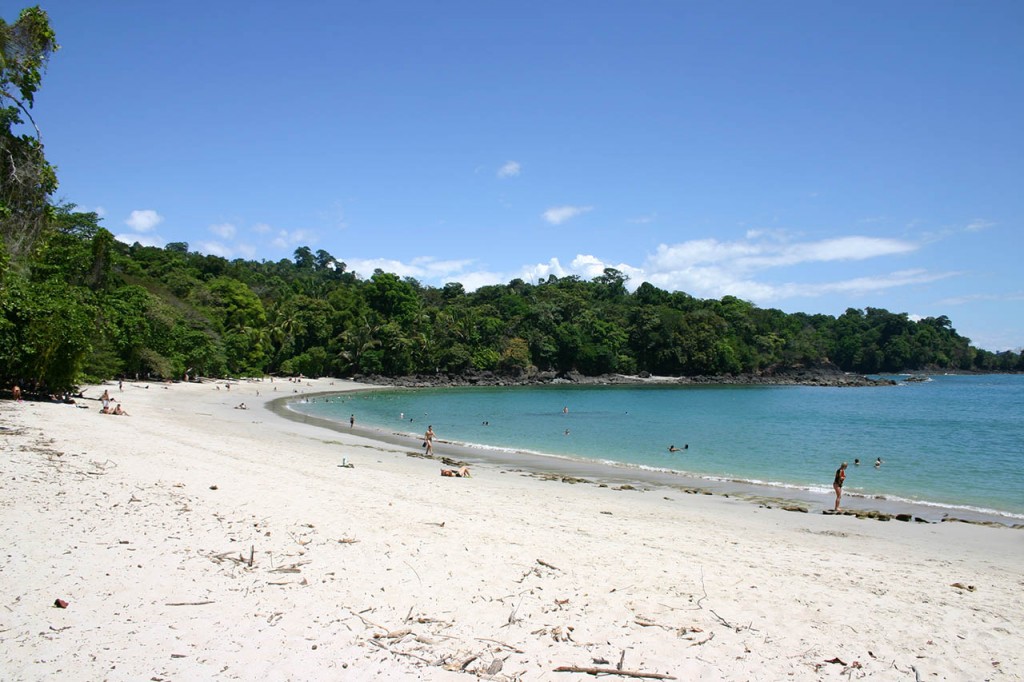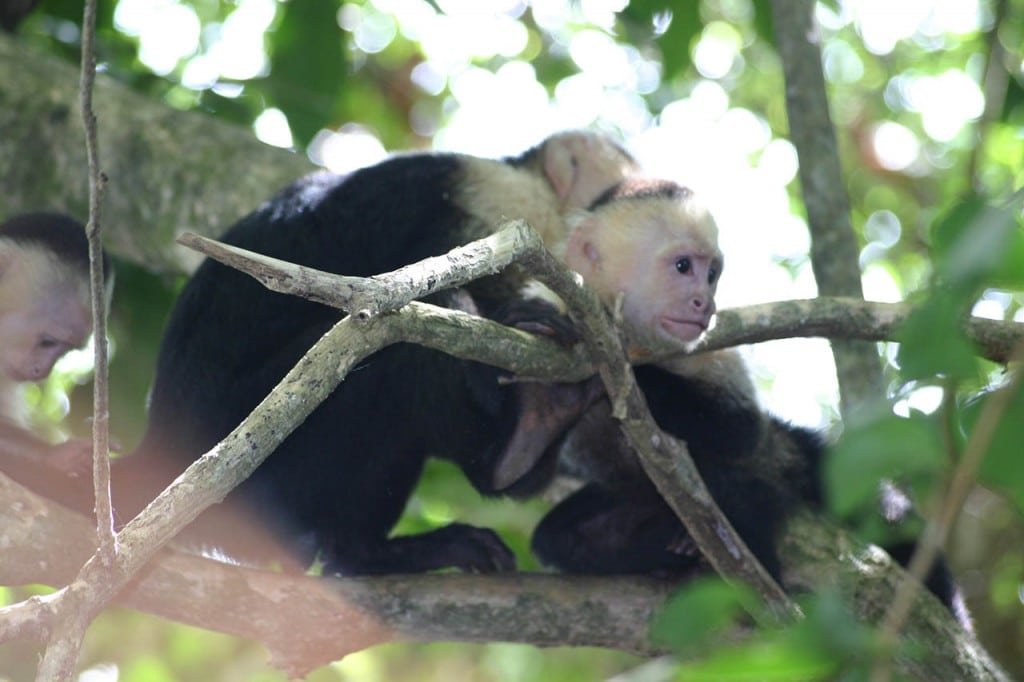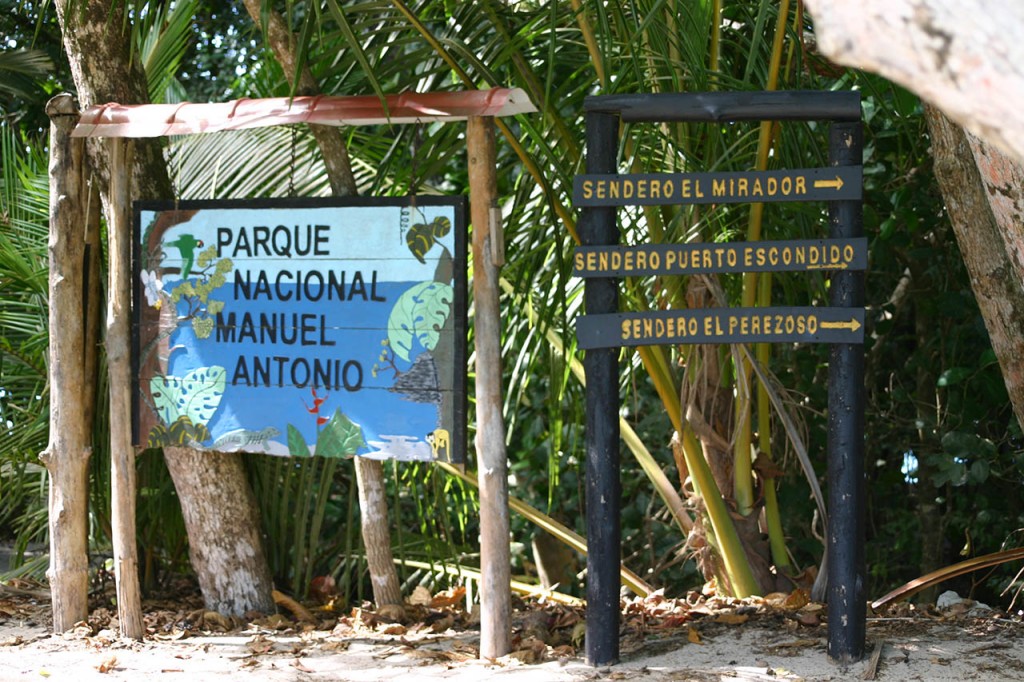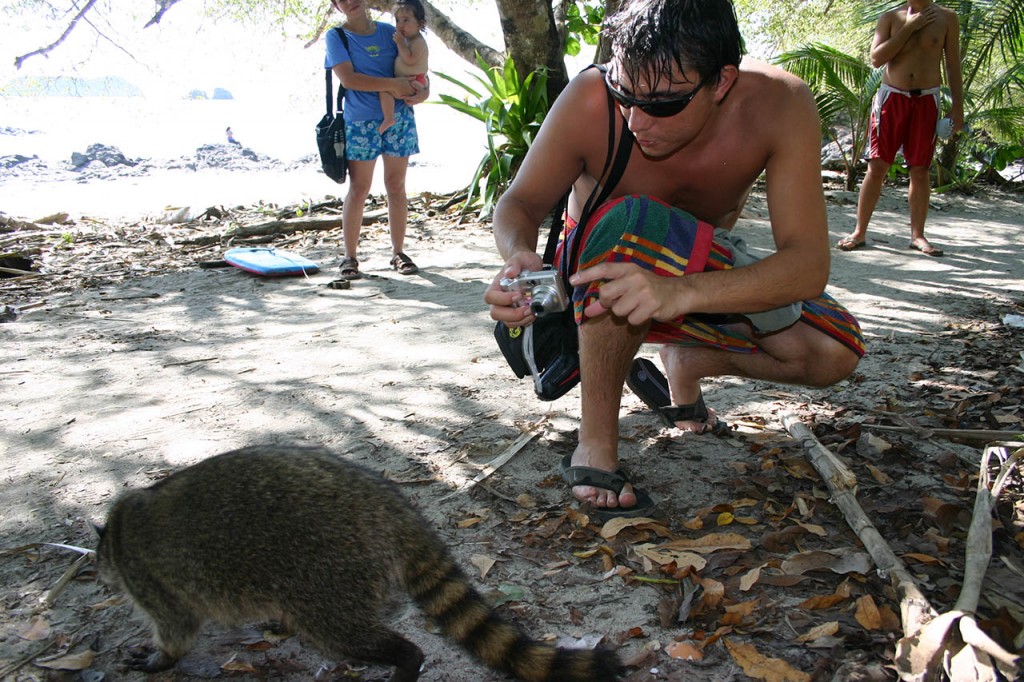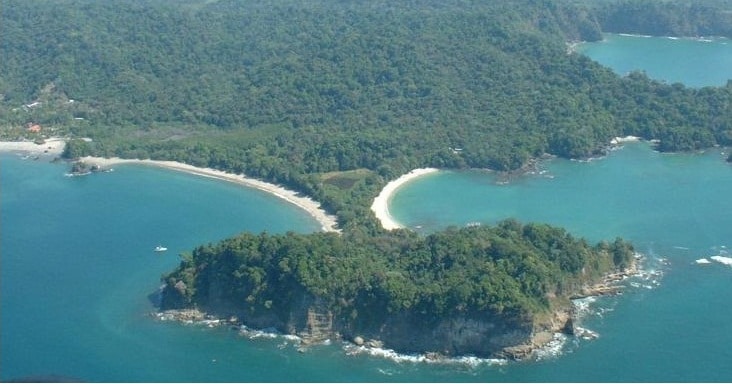The Manuel Antonio National Park is located on the Pacific Coast in the province of Puntarenas and is one of Costa Rica’s top attractions and should not be left off any Costa Rican itinerary. The park is an impressive wilderness paradise with abundant wildlife and beautiful beaches. Cathedral Point, with its forest topped cliffs was once an island, but is now connected to the coast by a thin strip of land. This land bridge now separates the parks two most popular beaches, Playa Espadilla Sur and Playa Manuel Antonio. It is awe-inspiring to have the opportunity to walk along lush green rainforest trails and find yourself magically on the sands of a private white-sand beach.
Manuel Antonio National Park
The National Park was established in 1972, to protect it from development as the area’s tourist industry began to boom. At this time the people of Costa Rica decided to preserve one of the most beautiful and bio-diverse areas in the world for future generations. Although it is the country’s smallest national park, the stunning beauty and diversity of wildlife in its 683 hectares is unequaled. These beaches are among the most beautiful in the country, lined with lush forest. The forest is home to white-faced monkeys, howler monkeys, squirrel monkeys, poison dart frogs, raccoons, colorful crabs, iguanas, sloth, toucans, golden orb spiders, bats, hawks, parrots, owls and eagles. The trails offer options for everyone, from casual walkers to serious hikers.
The park is equipped with restrooms, outdoor showers to hose off, and picnic tables. Nothing is sold once in the park, but you are welcome to take in anything you want except glass containers and alcohol. Remember you will be hiking so pack light, in a backpack rather than cumbersome coolers. Once you exit the park you need to pay again to get back in…so go prepared and plan to spend the day. Be sure to pack a bag for trash and leave no litter in this corner of paradise.
Unfortunately, camping is prohibited in the park, as it is small and the impact of even a few people could possibly damage the fragile natural environment that the park is attempting to maintain.
Entrance fees and schedule
- The Manuel Antonio National Park entrance fee is US$16 per person. Children under 12 are free.
- A private guide is available for $25 additional, at the park entrance or can be arranged through your hotel. They are great because not only do they speak English, but they know the park very well, and can easily help you spot the animals your untrained eye will likely miss. Plus many have telescopes and binoculars to enrich your experience.
- Park hours are 7 a.m. to 4 p.m. every day from December 1st to June 30th.
- Closed Mondays from July 1st to November 30th.
Getting here
Travel to the area is easy, and there are plenty of possibilities.
- From San Jose the drive is about 2 ½ hours. When renting a car, we recommend a 4×4 for more comfort and freedom as you explore our countryside.
- A local flight takes just 20 minutes and daily service is available.
- Shuttle buses run twice daily, providing you with comfortable semi-private transportation and air conditioning, without having to drive our windy roads.
- Private transfers can also be arranged to meet your chosen schedule and route.
- Public buses leave from the Tracopa Terminal at Plaza Viquez in San Jose six times a day. These are large, comfortable Mercedes buses.
Climate
The dry season lasts from December through March, but it is rather humid year-round. In rainy season some of the paths can get muddy and more intense, but weigh that against having the park almost to yourself and seeing the bright green nature that encompasses the area in all its glory. Besides, you won´t have to worry about getting a sunburn!
Seasons:
- Dry – December through March
- Transition – April
- Wet – May through November
- Very Wet – September and October.
- Temp: Avg. high 92°
Quepos Vs Manuel Antonio
Quepos and Manuel Antonio are two separate but interdependent towns found on the Central Pacific coast. They are just about 4 miles (7 km) apart. You will find hotels and great places to stay in either; so to give you a better idea of what to expect, here are some of the main differences:
Quepos has about 7,000 permanent residents, and a wide array of services including banks, stores, gift shops, hotels, markets, bars, restaurants, a hospital, a post office, bakeries, and a large bus terminal, allowing you to travel at ease knowing you will not be leaving any comforts behind. Also you will find this area to have a little more local flavor and local prices than Manuel Antonio itself.
Manuel Antonio is comprised of the more scenic and nature-filled area, 7 km from Quepos (and the road in between). In this area you will find the gorgeous white sand beaches that make this area famous as well as plenty of flora and fauna, the snorkeling is excellent too. This area is almost entirely a travelling population. Most visitors chose to stay in the Manuel Antonio area, and head into Quepos for dining, cultural interaction with the locals, and nightlife, as well as any services needed; i.e. banks, post office. Buses between the two cities run every half an hour, for about $.50 a person each way.

